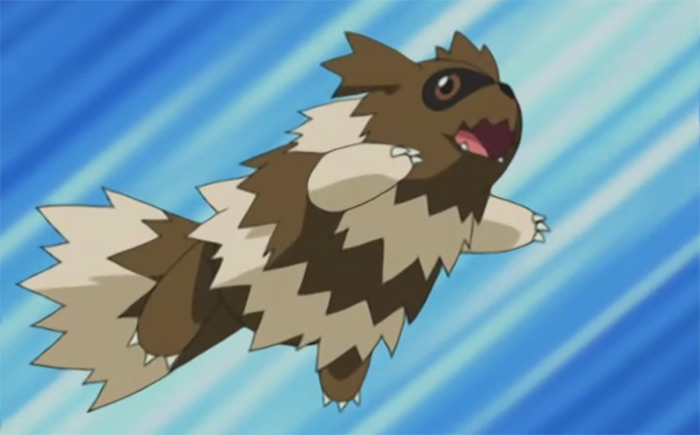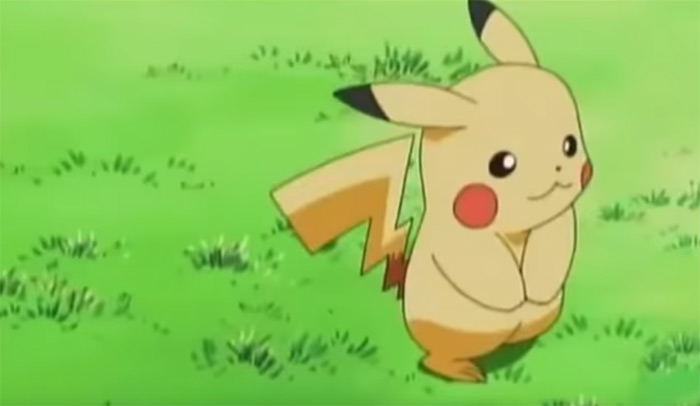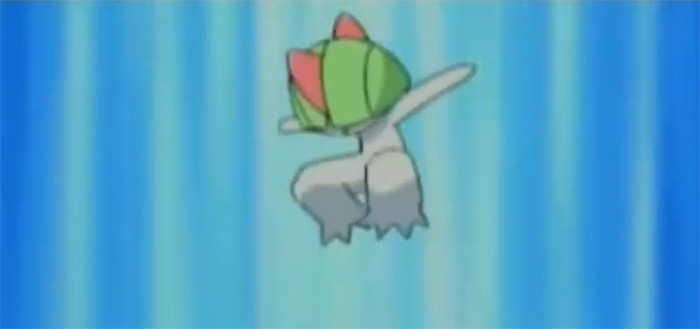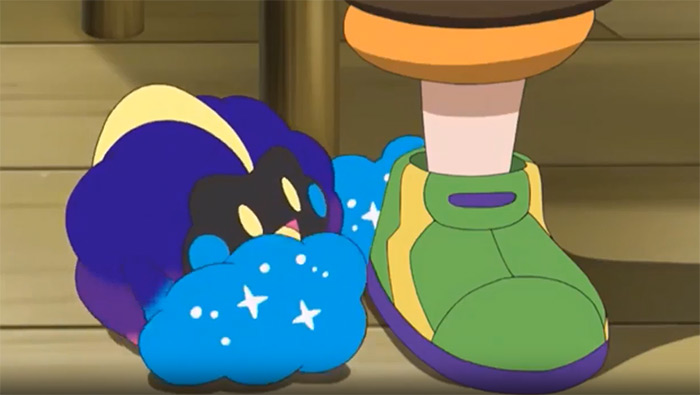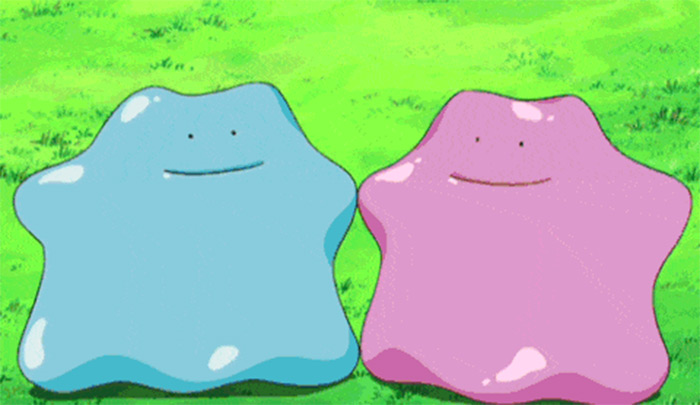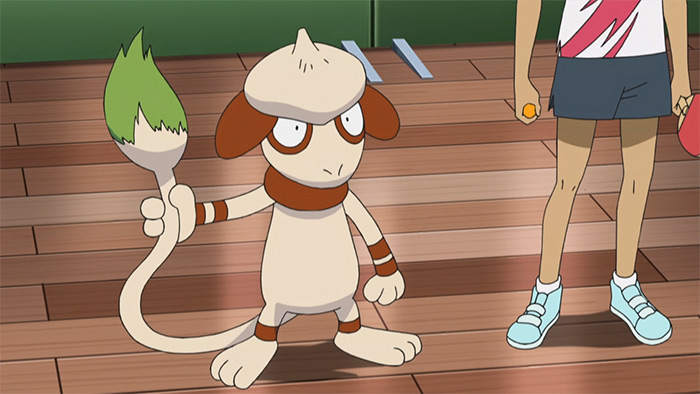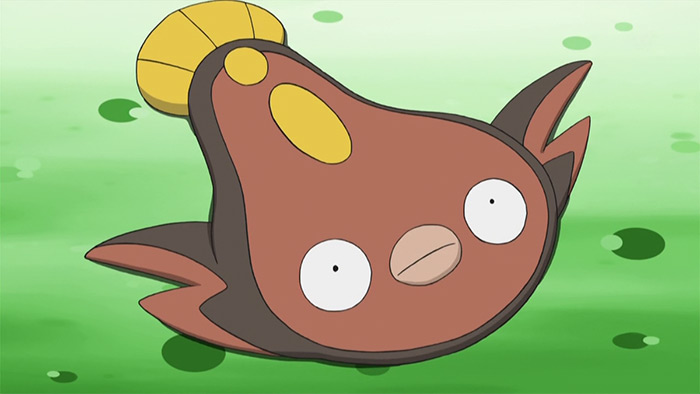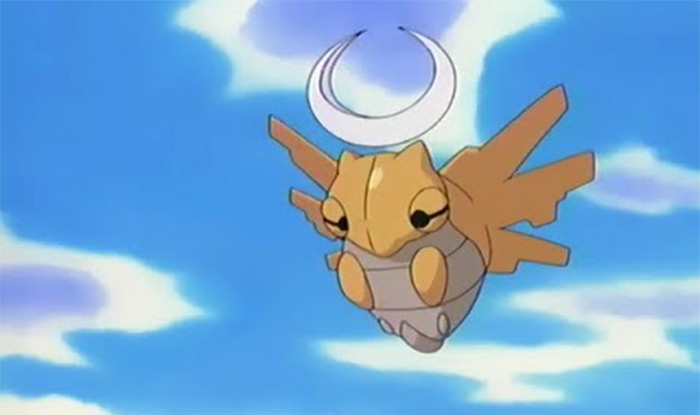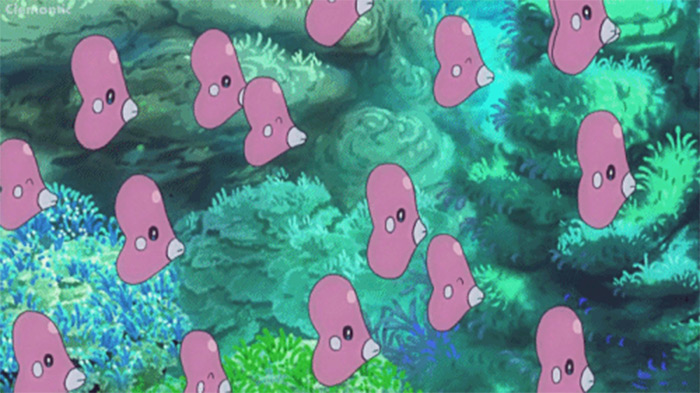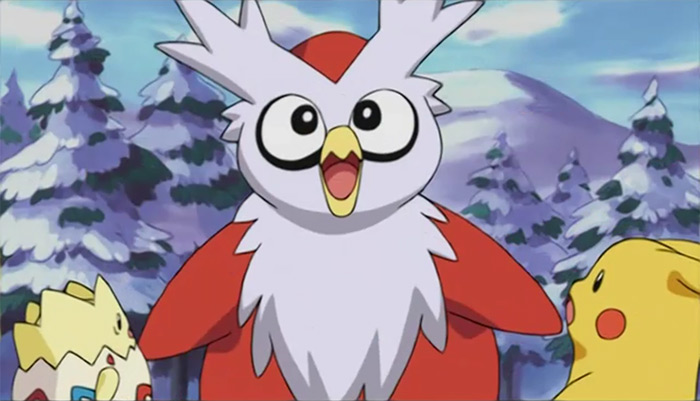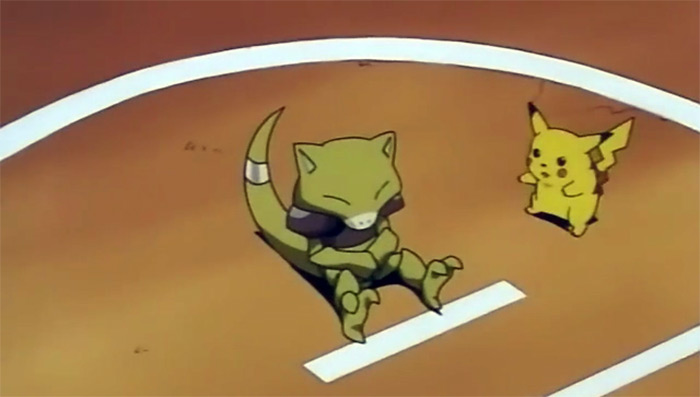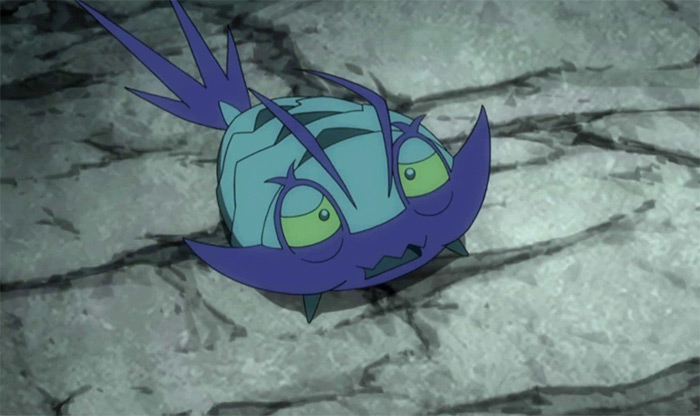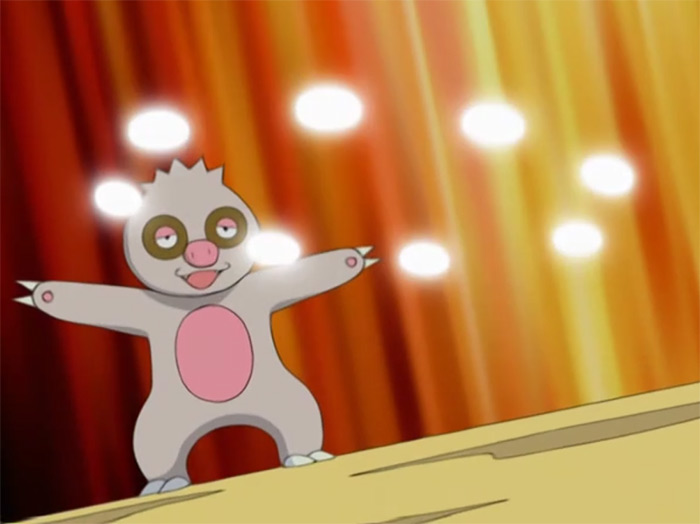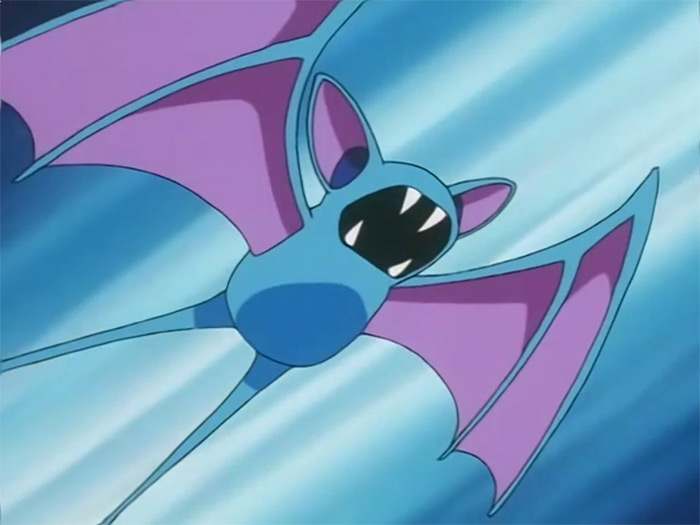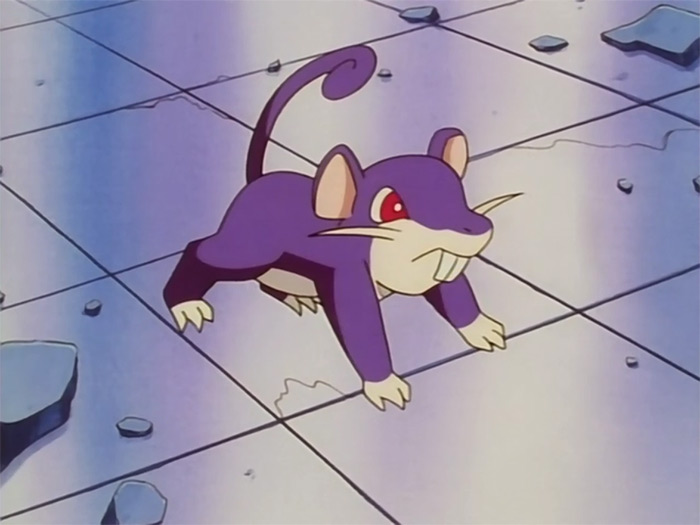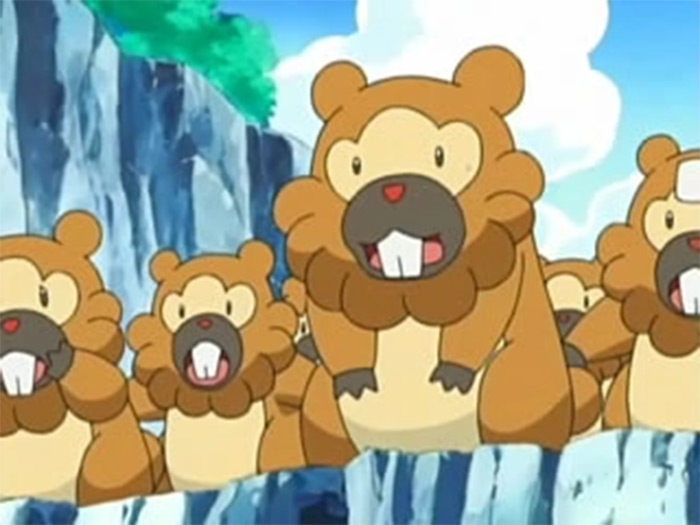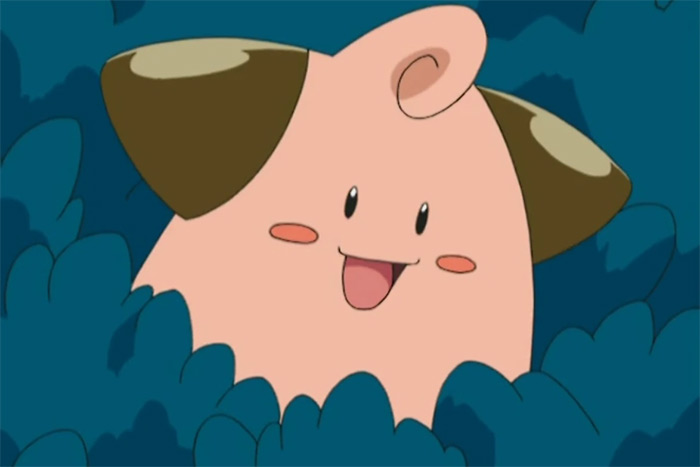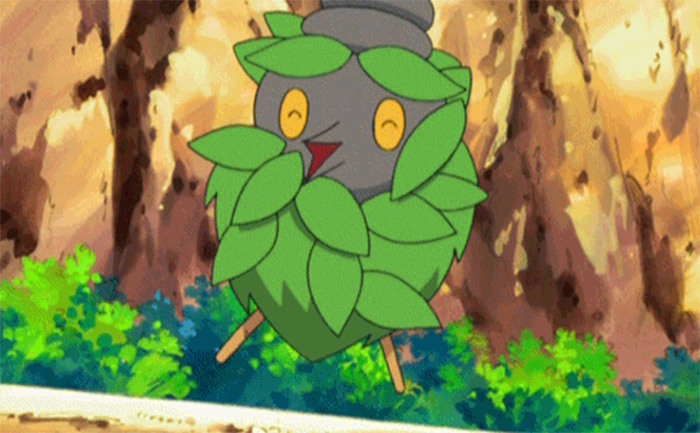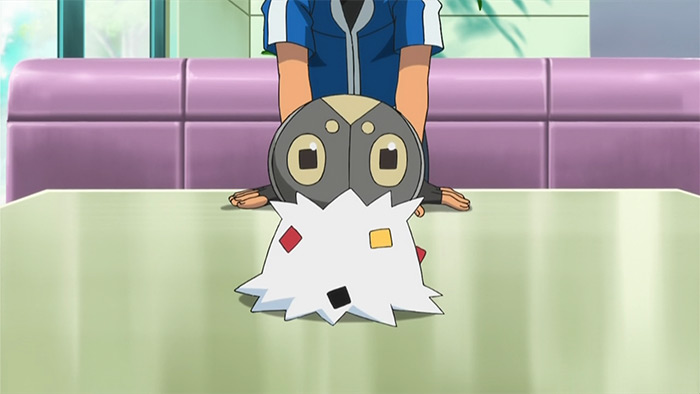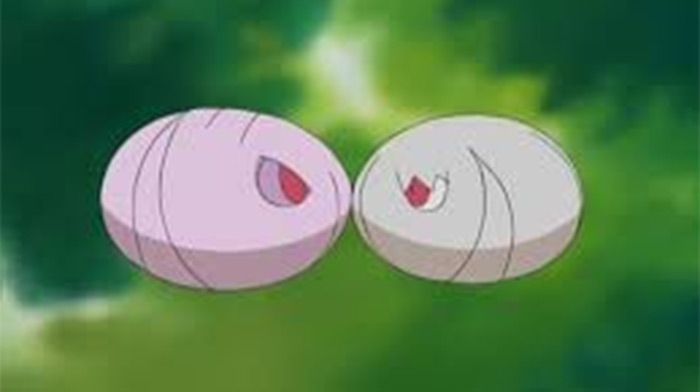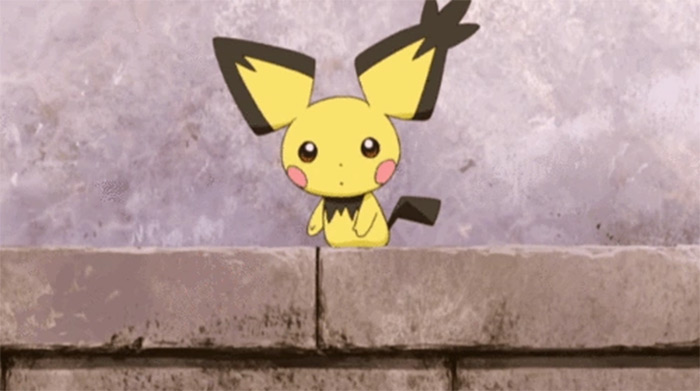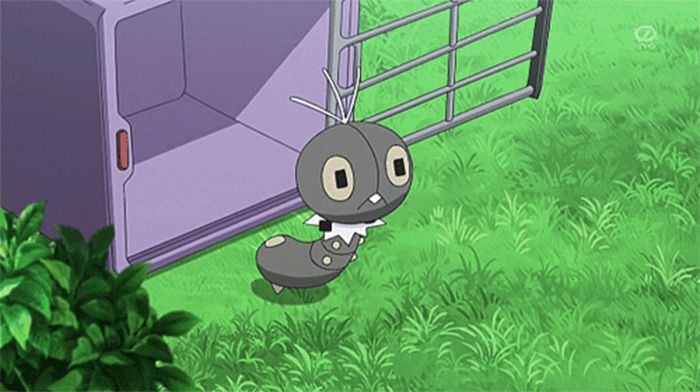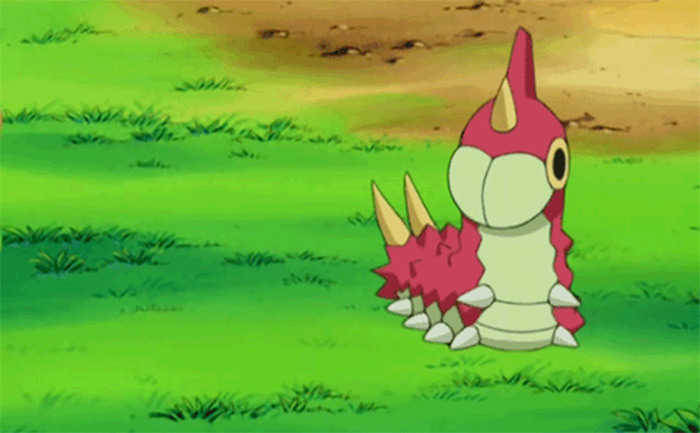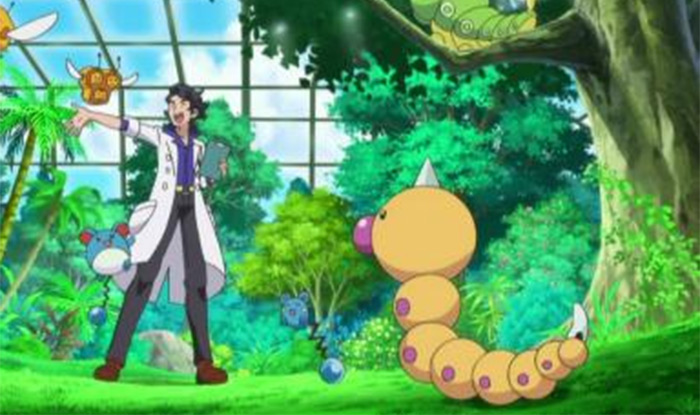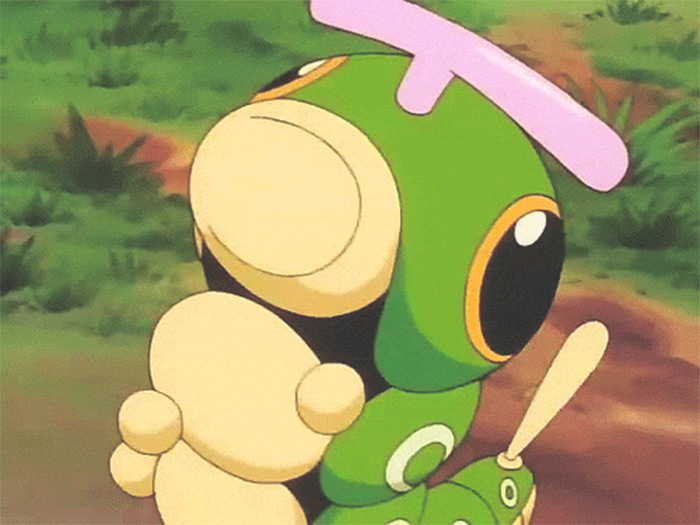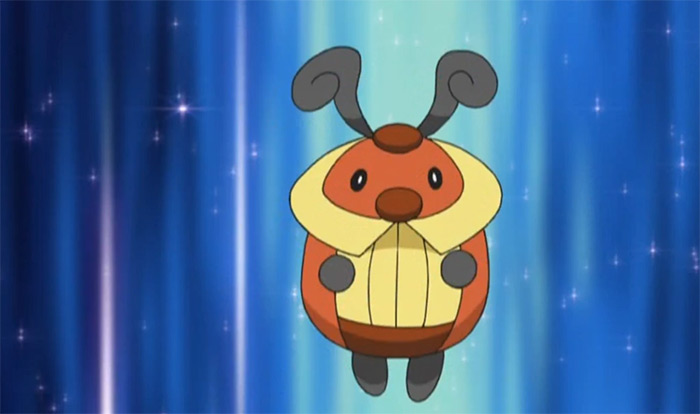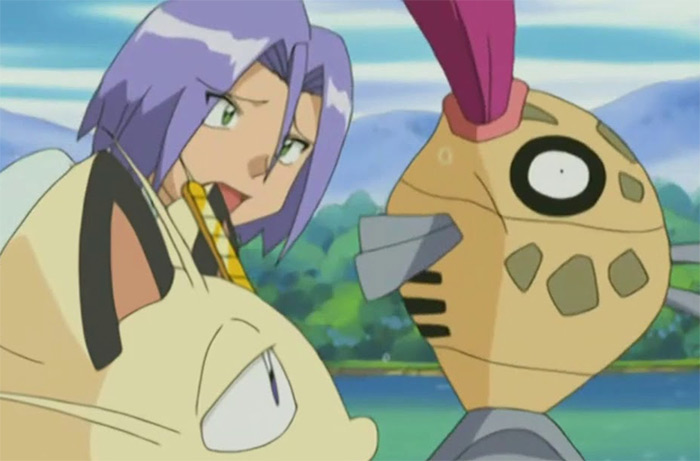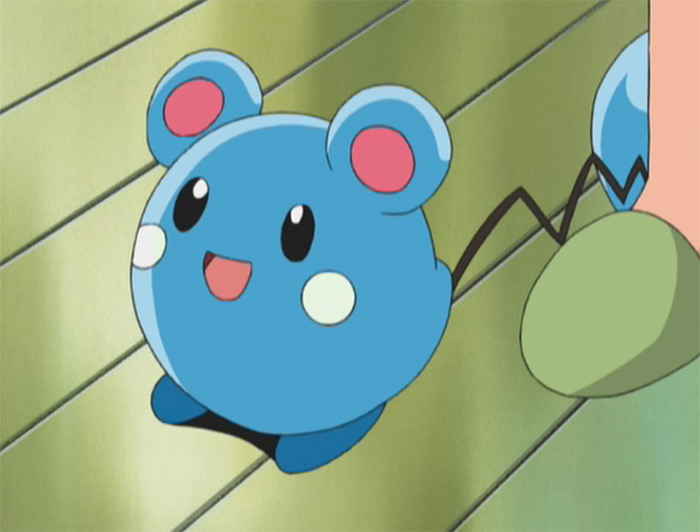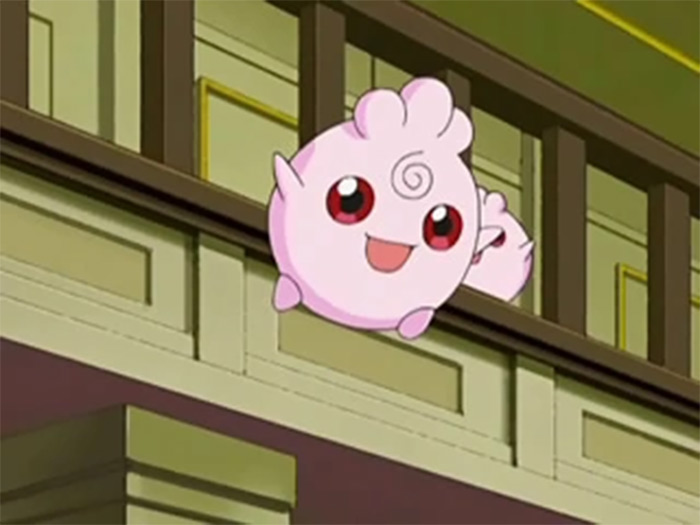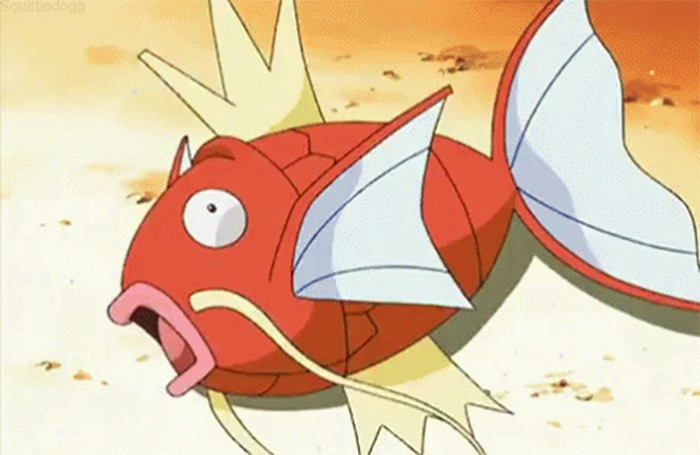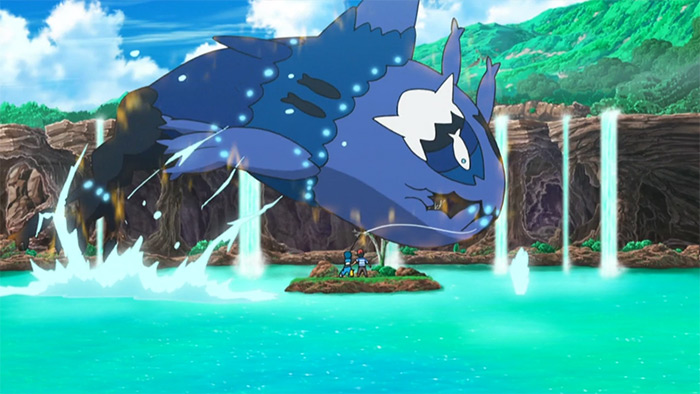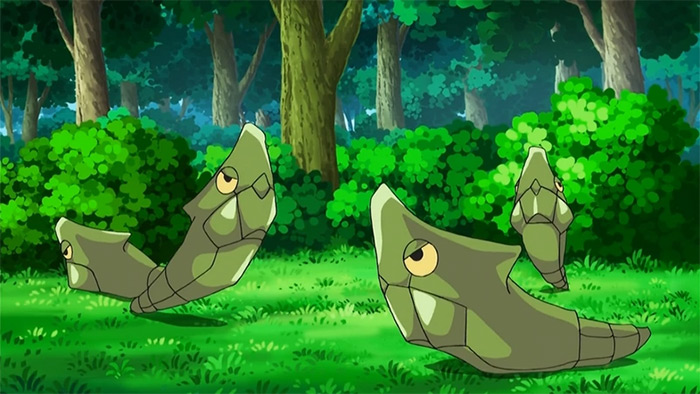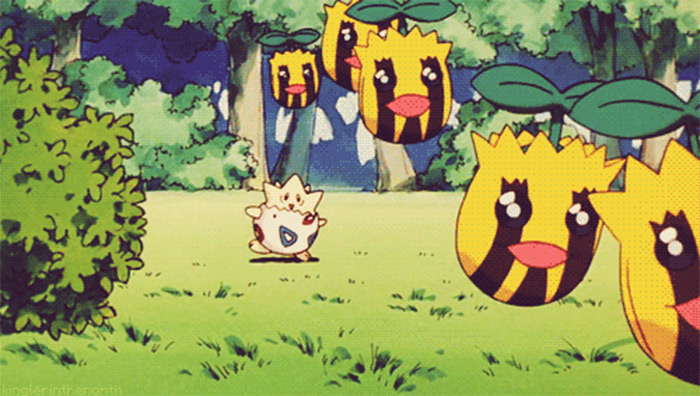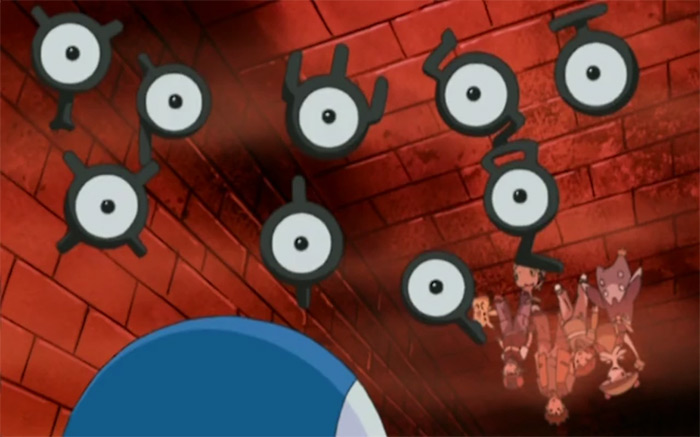And we all have our favorites for different reasons. With over 800 Pokémon released over many generations you’re bound to find some insanely powerful creatures. Of course, you inevitably found the opposite too. In this article let’s have a look at the weakest Pokémon in the franchise. I’ll focus only on the main games for Generation I to Generation VII. Believe me when I say there are a lot of Pokémon to comb through and a lot of factors to consider! Specifically I’ll look at Pokémon that may fall short of what they can do for you in battle.
35. Zigzagoon
This little guy isn’t anything too crazy but certainly not to be overlooked. His evolution is great and he can be a fantastic HM user. In fact, I think you could fill up all four move slots with HMs! But is he gonna protect you in battle? Not likely, at least not until he evolves into Linoone. If you want a strong standard-type in gen 3 with beefy stats I’d recommend looking elsewhere.
34. Pikachu
In Pikachu’s case, we have a second stage Electric-type Pokémon, so its BST is below average when accounting for all the Pokémon. Pikachu’s poor HP and Defense make it very, very fragile. The Light Orb item and Volt Tackle give it some niche viability as a glass cannon, though. Still, no matter what you do, it’ll eventually get outclassed. On the bright side, Pikachu evolves into Raichu when exposed to a Thunder Stone (unless you’re playing Pokémon Yellow), providing a notable improvement for battle capability. Despite these shortcomings, I’m sure people will find a way to squeeze in this Pokémon icon if they really wanted to.
33. Ralts
First seen in Generation III, Ralts is a first-stage, Psychic/Fairy-type Pokémon. It has a low, low BST of 198 that makes it look deceptively weak. Its stat distribution favors its Special Attack and Speed values and gets balanced with low HP and Physical Defense. Ralts also has access to a fantastic learnset and TM/HM access. For you, this kit means that using Ralts in battle while you train it up doesn’t have to be a complete chore. With Gardevoir or Gallade as final evolutions, you have something great to look forward to for powering up your Ralts.
32. Cosmog
Believe it or not, a Legendary Pokémon has made it on this list. Introduced in Generation VII, Cosmog is a Legendary Psychic-type that comes with only two moves: Splash and Teleport. So, in short, it’s as cute as a button and about as useful as one in battle. For now. Cosmog suffers from the Magikarp syndrome, but like twenty-times worse for an arguably more powerful reward. At level 43, Cosmog evolves into Cosmeon (which isn’t great either). Then it evolves again at level 53 into either Solgaleo or Lunala, depending on whether you got Pokémon Sun or Pokémon Moon, respectively. These final evolutions make Cosmog worth the hassle and are the only reasons Cosmog appears relatively low on this list. It’ll be a long grind to get this adorable Legendary up to snuff, so make sure to thank EXP share for doing the brunt of the work for you.
31. Ditto
Another popular Pokémon from Generation I, many trainers can instantly recognize Ditto for its dopey expression and, well, blob-iness. On top of being a Normal-type, it starts with 48s in every stat, which makes it thoroughly unremarkable. Ditto’s one move, Transform, lets it turn into the opponent, including letting it use their moves. While Transform makes fielding this Pokémon interesting, fighting fire with fire isn’t necessarily an optimal situation either. By that merit, it’s relatively “weak” in combat. As a silver lining, Ditto makes for excellent breeding fodder.
30. Smeargle
Next up, we have another Normal-type—this time from Generation II. Smeargle is a lot like Ditto in its strengths and weaknesses. Smeargle’s Sketch ability lets it permanently copy the last move its opponent used. So, it can potentially use ALL the Pokémon moves, which can be an interesting mechanic to play around with. Outside of this one-trick, Smeargle has no competitive qualities. It has a subpar starting BST at 250 and lacks any evolutions. Just like Ditto, Smeargle’s useful for Pokémon breeders.
29. Stunfisk
Looking at Stunfisk, you’ll either think it’s adorable, terrifying, or just plain weird. Introduced in Generation V, this Ground/Electric Pokémon has a strange set of weaknesses. Imagine being a Ground-type weak to…Ground moves or being an Electric-type that’s afraid of water. Weird, really. For a Pokémon with no evolutions, it has middle-of-the-pack stats with a focus on bulk in exchange for its offensive stats and an utterly tanked speed. This mix of typing and subpar stats makes it hard to figure out when exactly Stunfisk would come in handy.
28. Shedinja
This is actually one of the stranger Pokémon from Generation III. You acquire this Bug/Ghost-type only when you evolve a Nincada with an extra space in your roster (and a Poké Ball in your inventory, if playing any of the Generation III games). It seems to me that Nincada sheds its exoskeleton, which then turns into a Pokémon of its own. That’s kind of hardcore, if not a bit weird. Unfortunately, the best part about Shedinja is the concept. Despite a decent Attack stat, it has a lower BST than Nincada and—get this—only 1 HP. This is meant to work in tandem with Wonder Guard, an Ability that renders it immune to any non-super-effective attack. Shedinja’s typing and other workarounds make the gimmick much less potent in practice than it looks on paper, though.
27. Luvdisc
Another gen 3 release, this Water-type Pokémon has a cutesy design and equally cutesy lore for couples that find one. In the games, it serves as a source for heart scales, which you’ll need to use Move Reminders, and…well, that’s honestly all it has going for it. Luvdisc’s subpar moveset and mediocre stat spread (at a low BST of 330) make it very underwhelming for a Pokémon with no evolutions.
26. Delibird
Lacking any evolutions, this bird starts with a low BST and a terrible stat spread to boot. Delibird’s learnset doesn’t offer much with just Present (we’ll get back to this one) and Drill Peck, but its typing gives it decent move access via TMs. Unfortunately, this dual-typing makes it extra susceptible to Rock-type moves. Now, about Present: it’s bad. Imagine using a move that deals a random amount of damage, so it may or may not beat the opposing Pokémon. But wait, there’s more! It has a 20% chance to restore a quarter of the opposing Pokémon’s max HP. So, do you really want to be in a position where you’re about to knock out your enemy…only for your Delibird to heal it back up?
25. Abra
Generation I represent (again)! Abra is Psychic-type infamous for running away before you can even catch it. When you first get this critter, it knows only Teleport. Fortunately, Abra has a great stat line for a first-stage Pokémon with a starting BST of 310, especially notable with Special Attack and Speed values. Abra’s stat strengths carry over into its evolutions when it gets access to actual Psychic-moves, becoming a fearsome glass cannon. Its first evolution, Kadabra, comes relatively early at level 16, and its final evolution, Alakazam, only comes after you trade your Kadabra away. These Pokémon make evolving an Abra worth the effort.
24. Wimpod
Wimpod’s a first-stage Pokémon with a terrible Ability that makes it flee or switch out if it takes any damage. That’s probably the second-to-last thing you want your Pokémon to do short of going unconscious. Wimpod doesn’t have any great moves either, and with a 230 BST, it has awful stats aside from its Speed. At level 30, Wimpod evolves into Golisopod, the real reason you’d bother training it.
23. Slakoth
This Normal-type has a decent BST (280) for a first-stage Pokémon. Unsurprisingly, Slakoth has low Speed but usable Attack and physical bulk. However, it has one particularly crippling Ability: Truant. Every other turn, Slakoth will just outright not move. Imagine fighting a battle and your Pokémon just stops. It sets you up for a bad time.
22. Zubat
At this point, it shouldn’t surprise you just how hard the first Generation got over-powered by later releases. Most players will attest how annoying this bat could be. Zubats would fly in your face when you least wanted them to in caves. Zubat has a decent BST for a pre-evolved Pokémon at 245 with its highest stats being Attack and Speed. Unfortunately, Zubat (and even its first evolution, Golbat) felt weak even for their time. You may want to catch one to fill in your Pokédex; otherwise, Zubat is honestly not worth a slot on your starting roster.
21. Rattata
The mouse Pokémon named after a rat. Originally introduced in Generation I, Rattata got a newer Alolan variant in Generation VII. Rattata often appeared in starter areas and may have been many Pokémon players’ first catch in the wild. For a pre-evolution Pokémon, Rattata has a decent BST total of 250, but its unbalanced stat spread was too much glass and not enough cannon. Overall, it’s a very newbie-friendly Pokémon that will serve you until you inevitably catch something better. Or until level 20 if you decide to evolve it into a/an Raticate/Alolan Raticate.
20. Bidoof
Make sure to thank Nintendo for giving us this goof. Bidoof is a Normal-type and the beaver version of Rattata. Similarly, it’s probably one of the first Pokémon you’ll catch in the fourth-generation games’ starter areas. For a pre-evolution Pokémon, its BST is slightly lower than Rattata’s, and its moveset is nothing less than underwhelming. At level 15, Bidoof evolves into a Bibarel—pretty much just a bigger beaver.
19. Cleffa
This Fairy-type Pokémon is Clefairy’s baby stage. Like other babies, it evolves only with a high enough friendship. Clefairy and its final form, Clefable, have reputations for being relatively good Pokémon. Even the good must start somewhere, though, and it just so happens that Cleffa’s one of the weaker starts. Cleffa has a low BST of 218 with stat values that focus on Special Attack, Special Defense, and HP. This spread, unfortunately, leaves it very vulnerable to any physical attacks, and with Speed as its lowest stat, Cleffa will have trouble not getting one-shot by good physical attackers. Fortunately, Cleffa has access to a good moveset through leveling and TMs/HMs, making it a cut above the rest of the baby Pokémon.
18. Burmy
Burmy’s 224 BST doesn’t really make it good at anything. While its stat line favors HP, Defense, and Special Defense, those numbers are already pitifully low, and its offensive values are even worse. Plus, it only knows Protect until level 10 unless you teach it Hidden Power (which is a terrible move) using TMs. Since it can learn Tackle and Bug Bite during this stage, it’s arguably better off than the Cocoon Pokémon—but just barely. Burmy also evolves at level 20, so all hope isn’t quite lost.
17. Spewpa
The evolution of Scatterbug, Spewpa has access to Harden and Protect but just barely ekes out the Cocoon Pokémon BST-wise. Spewpa’s stats focus on physical bulk (HP/Defense) at the expense of pretty much all offensive capability. If you outright caught a Spewpa, it would arguably be less useful than if you evolved it from a Scatterbug because it wouldn’t even have access to Stun Spore.
16. Silcoon/Cascoon
We have Silcoon and Cascoon tied for the next spot on this list. Both Cocoon Pokémon evolve from Wurmple at level 7, though which one you get is totally random. At level 10, Silcoon turns into Beautifly while Cascoon evolves into a Dustox—both Bug-types but with a different secondary type. They share the 205 BST of the other Cocoon Pokémon’s along with the defense-focused stat spread. Oh, and they have Harden, too.
15. Kakuna
Kakuna is (unsurprisingly) one of the three Cocoon Pokémon. It evolves from Weedle at level 7 and features only a marginally better BST than its first stage. Kakuna fares poorly in battle due to a focused defensive spread, making it very underwhelming when attacking. On the bright side, you can evolve it into a killer Beedrill at level 10.
14. Pichu
Look, Ma! It’s Pikachu…but smaller. This cute fella numbered among the many baby Pokémon released from Generation II and onwards. With enough friendship, Pichu could evolve into the iconic Pikachu. Electric tends to fare better in the typing wars. However, being a first stage Pokémon, Pichu has a low starting BST at 205. With high Speed and decent Attack values, it could play at being a glass cannon, but you’d ideally evolve it sooner than later. Nothing against Pichu here, but we are listing the weakest Pokémon—adorability aside.
13. Scatterbug
The only Bug-type introduced in Generation VI(seriously!). Scatterbug is a first-stage Pokémon that stands just a cut above the Worm Pokémon. It has a BST of 200, though its stat distribution doesn’t afford it any notable strengths. Scatterbug will have a tough time in battle, but access to Stun Spore at least gives it utility. Fortunately, you only need to train it up to level 9 to get it to evolve into Spewpa, and then to level 12 for Vivillon.
12. Wurmple
Wurmple is a fairly weak bug-type Pokémon and one of those classics that you only catch to evolve it one day. Compared to Weedle and Caterpie, it shares the same BST but boasts the highest Attack and physical bulk of the three, while also being the slowest. Wurmple’s learnset practically combines what Weedle and Caterpie have access to. Plus, it has a more diverse evolution tree based on each Wurmple’s personality value (which gets randomized). At level 7, you’ll get either a Silcoon or a Cascoon. Then, at level 10, you could end up with Beautifly or Dustox. Heck, the option to get both might just be enough incentive to train multiple of these critters.
11. Weedle
Next we have another Worm Pokémon—this time from Generation I. At 195 BST (the same as Caterpie and Wurmple), it favors Attack and Speed while sacrificing points in its physical bulk. It’s also a Bug/Poison-type which gives it some more favorable resistances and access to a few more moves before it evolves. Starting at level 7, it can evolve into a Kakuna, and again at level 10 into Beedrill. Unless you really want Weedle’s evolutions, you should probably take a different Pokémon into battle.
10. Caterpie
Another little bug and Metapod’s little brother. I’m going three for three here with the Worm Pokémon. Caterpie has the same, obscenely low BST as Weedle and Wurmple, though its stats have a more defensive spread than the others that legitimately make it the least useful of the squad. Caterpie can try to defend itself with Tackle, but even against trainers fresh out of the starting area, it doesn’t put up much of a fight. The rewards for bothering with Caterpie only come when you evolve it into a Butterfree at level 10 (because Metapod isn’t good either).
9. Kricketot
Introduced in Generation IV, Kricketot boasts the lowest BST of any Bug-type with a grand total of 194, somehow undercutting the Worm Pokémon. Compounded with a limited moveset and no TM/HM moves, Kricketot’s defensive stat spread makes it very ineffective in battle. You may just want to train it up to level 10 so it evolves into Kricketune before permanently benching it anyways.
8. Feebas
Feebas is like a rehashed Magikarp but with a few differences. For one, its stat line focuses more on Special Defense. Two, while it knows the famously useless Splash, Feebas can actually learn other moves through TMs/HMs. Three, unlike Magikarp, Feebas requires specific conditions other than just grinding its levels to evolve. With enough effort, you can score a Milotic (think a more Special Attack/Special Defense-oriented Gyarados). Until then, you’re stuck with the feeble Feebas.
7. Azurill
Azurill is a Water-type baby Pokémon also first appearing in the gen 3 games. A Normal/Fairy dual-type gives it access to good movesets but being a first-stage Pokémon that can only evolve with friendship means it has pitiful stats (190 BST). Eventually, it can evolve into Marill and finally into Azumarill. Overall, it’s a weak start to a good evolution lineup.
6. Igglybuff
You can probably guess from the name that this is the baby stage of Jigglypuff/Wigglytuff. This Normal/Fairy-type has a starting 210 BST, which doesn’t seem all that bad for a first-stage Pokémon until you realize that 90 of it goes into HP. With low Speed, Defense, and Special Defense, all attacks are bound to rip through Igglybuff before it can even do anything. With access to relatively few moves, Igglybuff is the weakest of the baby Pokémon.
5. Magikarp
Magikarp is arguably the most famous “bad” Pokémon in the franchise. This first-generation Water-type looks like a fish with whiskers akin to a koi, which is unsurprising considering Japanese fans know it as “Koiking.” And, that’s probably the most exciting thing about Magikarp at face value. Magikarp’s pathetic 200 BST allocates most of its stats to Defense and Speed. It knows only a single move: the iconic, albeit useless, Splash. The game does throw you a fishbone by letting it learn Tackle at level 15, but chances are you’ll never let this thing see the light of combat. The only reason Magikarp doesn’t appear further down this list—and why you should entertain training one—is because it has one of the most sought-after evolutions: Gyarados. Fair warning, evolving this useless fish means a painful road to level 20 where the rest of your team and EXP share carries it through each battle.
4. Wishiwashi
Introduced in Generation VII, Wishiwashi holds the title for the lowest BST of any Pokémon in the franchise at a grand total of 175. Unfortunately, it doesn’t get better on its own since it has no evolutions. To offset these crippling qualities, Wishiwashi has the unique, gimmicky ability to change forms via Schooling starting at level 20. You just have to suffer training it normally until then. Compared to its solo form, the transformation provides a significant boost in all its stats aside from Speed. Now, that may sound cool at first, but this transformation isn’t so easily achievable. You gamble that Wishiwashi will actually survive its first turn of combat with over a quarter of its HP so that it can change into its School Form, which can be difficult to achieve because of its uber low stats.
3. Metapod
This Bug-type Pokémon from gen 1 has spawned its fair share of Internet memes. If you’re one of those unfortunate players who caught a Metapod, then life just got a lot…HARDEN—harder. Really, catching one in the wild means you only have a single, often underwhelming defensive move, so smart trainers should catch a Caterpie and evolve that to a Metapod at level 7 instead. Like other Cocoon Pokémon, Metapod sports a mediocre BST at 205 and a dedicated focus on physical bulk. On the bright side, it doesn’t take too long to get this Pokémon to evolve into your Butterfree at level 10.
2. Sunkern
Before Wishiwashi swam into action, Sunkern held the record for lowest BST of any Pokémon since its introduction in Generation II. All its stat values start off at an unrespectable 30. As a first-stage Pokémon, low stats make sense, but that stat line makes it nigh unusable despite access to some good Grass-type moves. Rather than grinding out levels, Sunkern evolves once exposed to a Sun Stone. Unfortunately, the evolution doesn’t make it all that great nor generally worth a spot on your team. Sunkern’s greatest achievement will come from you filling in its Pokédex entry.
1. Unown
Here’s what you’ve been waiting for. The WEAKEST Pokémon to top off this list—Unown! The alphabet meets Pokémon with these horribly weak… things. They weren’t a bad concept at the time Generation II rolled out. Imagine all the stuff you could spell if you got all 28 different types of Unown! Unfortunately Unown’s narrative/lore significance happens to be its only good quality. For a Pokémon with no evolutions, it has terrible stats all around. Its subpar offensive capabilities are especially crippling when all it can ever do is use the very gimmicky Hidden Power move. Plain and simple, Unowns just have no worthwhile role in battle, unless you’re doing some meme-y game run. On the bright side, it doesn’t take that many of them to spell out “B-A-D”—probably the most appropriate thing the franchise’s weakest Pokémon can do.
